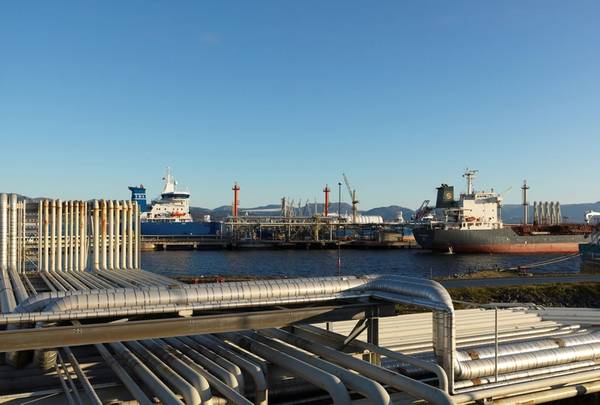
If your outfit is all about leak detection, then you might want to call Norwegian energy company Equinor.
The Stavanger-based outfit faces a reported 650,000 manhours and a $60-million bill this year and next for corrective work on pipes and valves at its 40-year-old Mongstad refinery alone. A Norwegian offshore union; the industry’s safety authority; news reports and the company itself confirm the scale of the undertaking.
The state of Mongstad maintenance came to the fore Monday morning, when a leak said to be of liquefied petroleum gas, or LPG, forced an abrupt evacuation of 300 staff. The facility had only just been audited (November) by safety inspectors of the Norwegian Petroleum Safety Authority.
Although the leak was stopped in about an hour, the evacuation was enough to raise eyebrows and the ire of Norwegian union reps who say a focus on costs has resulted in neglected pipeline and plant maintenance: “Every day, more and more pipes are found to be in need of repairs before there are leaks,” Norwegian DN quotes a shop steward as saying.
Equinor and the PSA admitted as much. In fact, before Monday’s evacuation scene on the coast near Bergen, Mongstad refinery audits had followed or preceded each new leak. Now, Equinor (formerly Statoil) admits a decade-long re-surfacing program is running its course at the coastal receiving terminal, just as a two-year maintenance overhaul gets underway at the 226,000-barrel-a-day facility.
After Monday’s incident, the company got immediate approval for work to modify the refinery’s crude-oil facility. The consent enables modifications to allow heavier crude oil through its process kit, a so-called residue debottlenecking project.
Work at Mongstad is crucial to Norwegian offshore plans. Phase 1 of the giant Johan Sverdrup development will send the oil from two dozen production wells to Mongstad via a 274-kilometer pipeline. The refinery stores 9.4 MM bbls of crude and already serves offshore fields via two crude oil pipelines.
Repair Programs
The problems an aging refinery faces in taking in new crude types or new well stream from offshore seem overarching: “Each plant can have over 35,000 valves and as many as 200,000 monitoring points,” Honeywell says. The supplier offers plant-wide remote monitoring as part of a predictive maintenance and safety package.
“Monitoring costs for leak detection and repair programs are escalating,” a Honeywell document states, adding, “Many companies are not meeting regulatory requirements or are incurring significant violation costs.”
In the case of Equinor, the Mongstad plant has a long history of leaks, alleged maintenance missteps and costs overruns. A year ago, safety inspectors began looking into an October 2017 leak of hydrogen-rich gas at a Mongstad petrol plant.
 Corrosion-aware: Equinor’s offices in Oslo (Credit: William Stoichevski)
Corrosion-aware: Equinor’s offices in Oslo (Credit: William Stoichevski)
“The leak occurred when an operator, after gas had been detected in the area, attempted to operate a valve. That caused the pipe end carrying the valve to break off so that the gas could freely escape. The pipe had rusted through owing to corrosion under insulation,” a recent PSA letter to the oil company said.
The PSA, and at least one union, say “an acceptable standard” of maintenance has not been met at Mongstad. The PSA recommended better leak detection.
But, in 2013, a steam leak at a Mongstad refinery cracker was also linked to corrosion beneath insulation causing a feedwater pipe to crack and release 78 kilograms of steam per second from water superheated to 245 degrees Celsius.
Aging Plant
While the causes of Monday’s leak still aren’t known, the record suggests leaks have become commonplace for the aging oil hub. The pre-accident audit by the PSA in November was intended to show that Equinor was “meeting the requirements in the Major Accident Regulations”.
“The audit (instead) identified one regulatory non-conformity: This concerned a deficient strategy for preventing and limiting major accidents,” safety inspectors wrote.
Their work might be seen in conjunction with a company plan to extend the plant’s life to 2040, but Mongstad’s accident rate could be part of what the PSA has called “the trend” toward more incidents. Though onshore, Mongstad suggests aging plant could be in need of more care than some think, and there’s thousands of tons of aging process plant festooned to structures offshore.
“More and more facilities are either being used or planned for use beyond the scheduled design life,” the PSA wrote of offshore platforms and rigs in 2013. Offshore, the pounding of waves and bearing of loads makes the need to study corrosion all the more constant.



